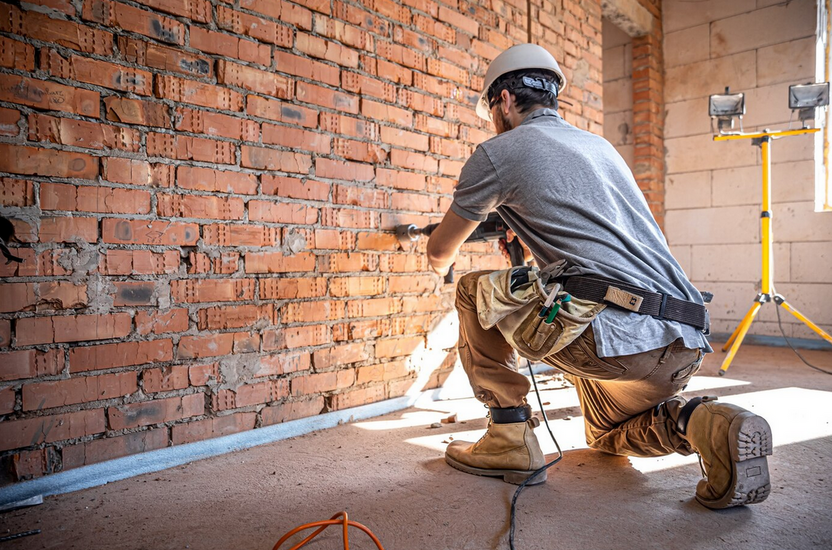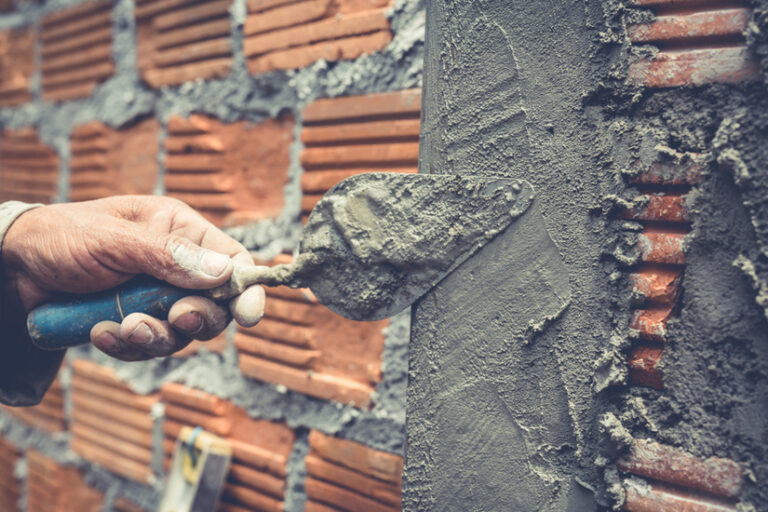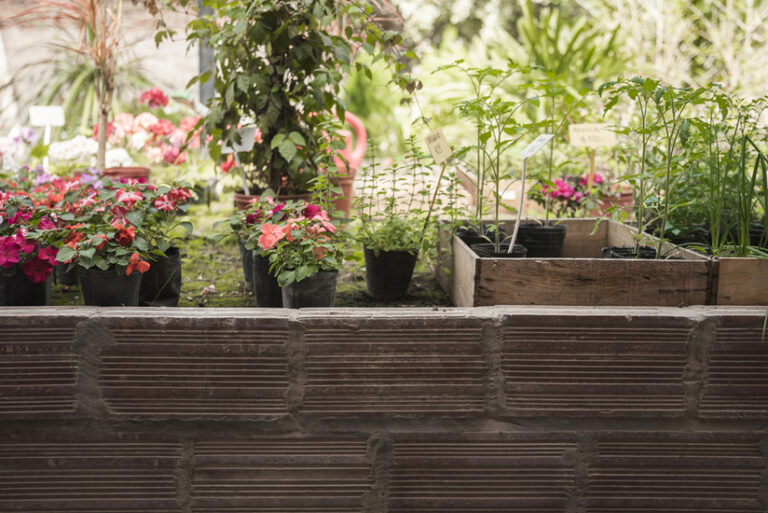On a busy construction site, time is money. If you’re moving bricks and mortar all day, you already know this: efficiency isn’t just a nice-to-have, it’s the line between smooth progress and frustrating delays.
And when it comes to mortar handling, the brick hod, a deceptively simple tool, plays a bigger role than many give it credit for. Used well, it can save time, conserve energy, and even reduce waste. Used poorly, and it turns into a back-breaking, morale-draining liability.
So let’s break it down. What are the best hod techniques out there that make mortar handling faster, cleaner, and more efficient, without killing your shoulders in the process?
What Exactly Is A Brick Hod, Anyway?
If you’re new on-site or just brushing up, a brick hod is a three-sided metal box with a long handle, typically designed to be carried over one shoulder. Originally used for carrying bricks, many teams also use it to transport mortar from the mixing station to the laying area.
There are two common variants:
- Brick hods – used mainly to haul bricks.
- Mortar hods – often deeper and lined to better hold wet mix.
They may look simple, but in skilled hands, they become part of a well-oiled workflow. The key lies in how they’re used.
Why Mortar Efficiency Matters
You don’t lay bricks without mortar, and you definitely can’t keep pace if your mortar’s drying out, being spilled, or taking forever to arrive at your wall.
Efficient mortar handling:
- Keeps the bricklayer working without interruption.
- Reduces material waste (especially when temps rise and mortar sets faster).
- Lowers fatigue from repeated trips and lifts.
Common Pitfalls That Drain Efficiency
Let’s face it, we’ve all seen things go wrong:
- Mortar slopping out with every step.
- Overloading the hold until it’s nearly tipping.
- Long detours across chaotic sites.
- Poor timing, the mortar shows up cold or late.
- Carriers struggling with posture, taking frequent breaks from shoulder pain.
These problems aren’t just inconvenient. They bleed productivity and build resentment, two things no foreman wants spreading on site.
The Techniques That Make A Difference
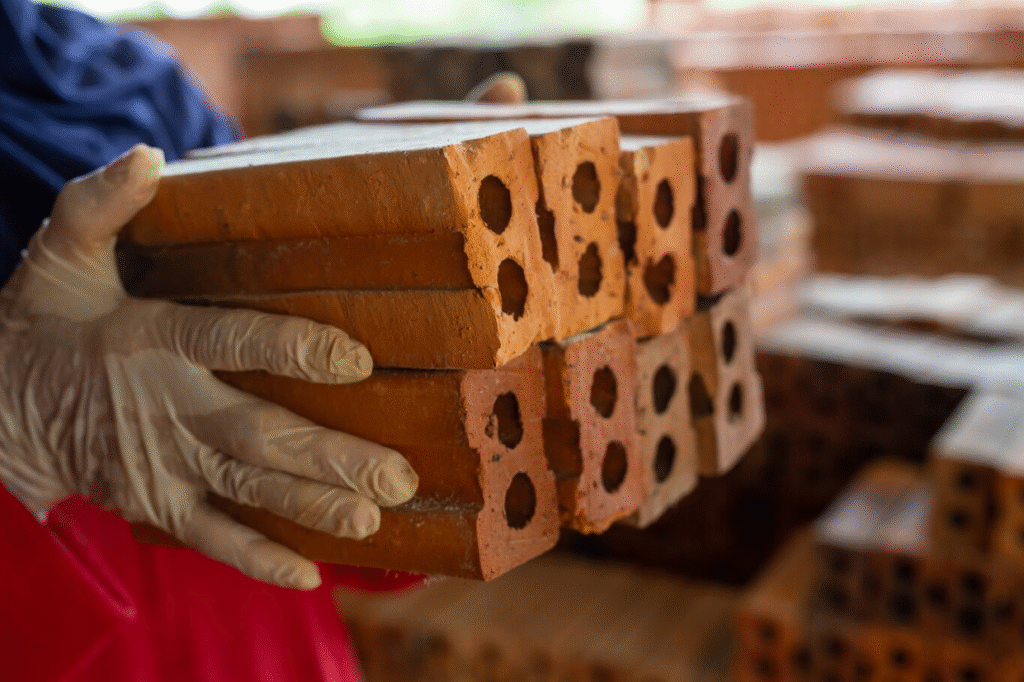
These aren’t hacks or shortcuts, they’re the tried-and-tested practice.
1. Balance The Load, Don’t Just Fill It
Mortar is heavy. Wet mortar is heavier. The goal isn’t to pack the hod to the brim, it’s to carry just enough for efficient use without putting the carrier in a chiropractor’s office.
Smart load tips:
- Fill two-thirds of the hod max, especially on warm days.
- Center the mortar evenly; an unbalanced load is the fastest way to lose material and twist your back.
- Use a trowel or scoop to shape a low mound; this reduces slosh during transport.
You’ll go more often, yes, but you’ll go faster and longer without burning out.
2. Master The Loading Technique
Think of mortar like soft cake batter. You don’t just dump it in; you layer it in a way that holds.
- Scoop from the side of the mortar board, not the top; the top layer might already be drying.
- Avoid air pockets; they destabilize the load.
- If mixing manually, pre-stir the mortar a bit before loading to keep the consistency smooth.
3. Use Body Mechanics To Your Advantage
Carrying a hod is all about physics, and your spine is the fulcrum.
- Always lift with your knees, not your back.
- Switch shoulders every few loads to avoid muscle strain.
- Keep the handle resting diagonally across your chest, with your free hand steadying the base if needed.
- Walk with short, deliberate steps, especially on scaffolding.
If your body feels like it’s doing all the work, you’re probably doing it wrong. Good carriers move like they’re gliding.
4. Get In Sync With The Bricklayer
This one’s underrated. A good hod carrier works almost telepathically with the bricklayer.
- Watch their pace and anticipate when they’ll need more mortar.
- Don’t wait to be called, be there before they ask.
- Learn their preferences. Some like smaller, frequent deliveries; others prefer larger loads less often.
Efficiency isn’t just about speed; it’s about timing.
5. Avoid The Spill Zones
Scaffold boards, loose gravel, uneven planks — the site’s full of hazards waiting to trip up your mortar.
- Stick to clean, stable paths wherever possible.
- Slow down around corners or slopes.
- Don’t rush, speed comes from fluid movement, not sprinting with 30 kilos on your shoulder.
Want a quick trick? Slightly tilt the hod inward while walking to prevent the mix from tipping out.
6. Upgrade To Better Tools (If You Can)
Not all hods are made equal. Newer models come with ergonomic grips, lighter materials, or even angled interiors that help stabilize mortar during motion.
Some seasoned carriers customize their handles, adding shoulder padding or wrapping the grip with tape to reduce slippage. A small change in gear can make a big difference when you’re hauling mortar all day.
Why Training Is Everything
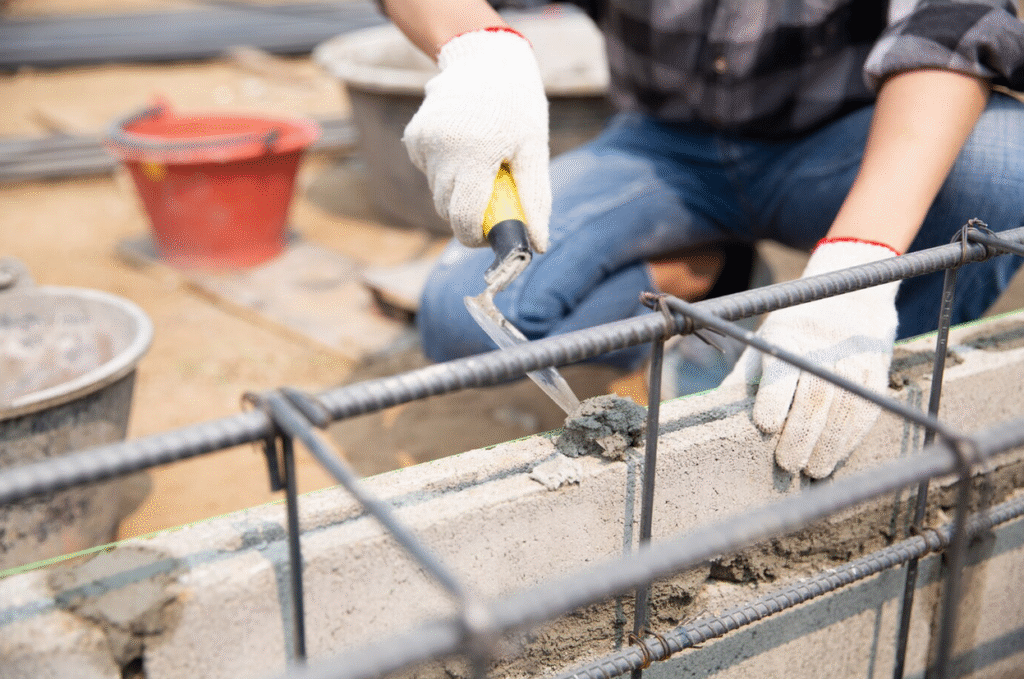
Let’s be blunt, most laborers don’t get trained in mortar handling. It’s seen as grunt work, not a skill. But that’s short-sighted.
Good hod technique:
- Prevents injuries
- Speeds up bricklaying
- Makes a carrier more valuable on any site
If you’re running a team, it’s worth investing a bit of time in showing recruits the ropes. It pays off quickly.
Want to sharpen your construction skills without risking injury or wasting material?
Check out Tradefox, a simulation platform that lets you practice bricklaying, renovation, and other construction techniques in a realistic, risk-free environment. It’s perfect for newcomers, apprentices, or even seasoned tradespeople who want to refine their methods.
The Payoff: Less Waste, More Speed, Happier Teams
When a site runs well, you feel it. Mortar flows where it needs to go. Bricklayers stay in rhythm. No one’s constantly running back for more. And at the end of the day, there’s less fatigue and more progress.
A few signs your team is winning the mortar game:
- No dried mortar is wasted at the end of the day.
- Bricklayers rarely call for more; it's just there.
- Carriers move with rhythm, not chaos.
- Less yelling. More building.
That’s what hod mastery looks like.
What About The Future? Tools Are Evolving, But Hods Aren’t Going Away
Yes, there are motorized carts, mortar silos, and all sorts of tech coming onto modern sites. But the humble bricklaying hod still holds its place, especially on tighter builds or areas where machines can’t reach.
It’s not going anywhere. It’s just getting smarter, thanks to the folks who use it well.
Final Thoughts
The brick hod isn’t just a bucket on a stick. In the right hands, it’s a tool that supports the entire bricklaying hod operation.
It’s about technique. Awareness. Rhythm. And a little pride in your role.
If you’re new to the trade, or even if you’ve been hauling mortar for years, there’s always a way to do it better. Keep learning, stay sharp, and never treat any part of the job as “just carrying stuff.” That’s where the pros separate themselves.
Train smart. Build better.

